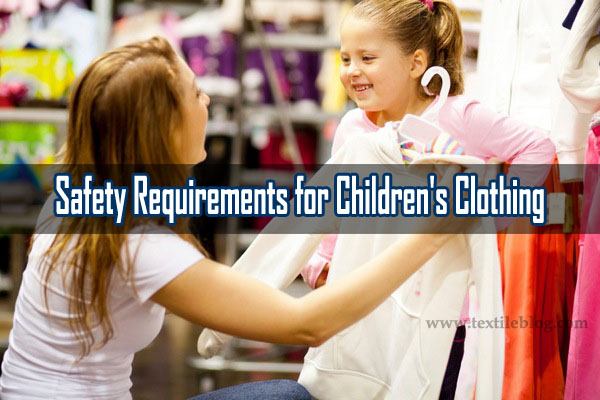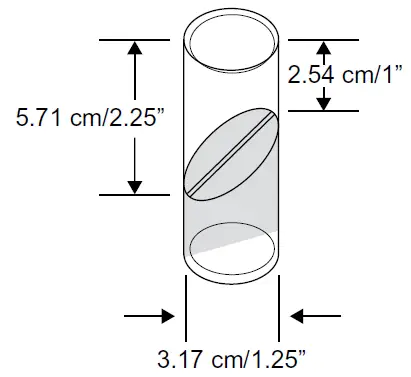Product safety requirements for children’s clothing are an extremely important issue in the apparel manufacturing sector. The manufacturers are always committed to maintain children’s clothing safety. To avoid potential hazards they maintaining safety standards such as button, zippers, drawstrings, fasteners, decorative attachments, and so on, must not pose any kind of harm to children during normal uses.

Before we discuss the product safety requirements we have to know, how can children get harm from their clothing?
How can Clothing’s Harm Children?
The clothing is worn by children every day may cause injuries, if standard product safety requirements are not maintained. Children clothes get harm in the following areas:
- Get Choke on buttons that come loose on their clothing’s.
- Will get very sick if children swallow a button battery. These small batteries used in clothing for the decorative purposes such as flashing shoes.
- May be strangled if a hood or drawstring gets caught on fences, and bus doors.
- May be burned very badly if their clothes catch fire.
- Can fall down and get hurt if children’s shoes don’t fit or have a good grip.
- Get hurt their back, neck, or shoulders if children’s clothes are don’t fit properly.
Children’s Clothing Potential Hazards:
Children’s clothing can present unnecessary risks of injury when poorly designed or constructed.
Hazards associated with children’s clothing are listed below:
- Small parts
- Flammable fabrics
- Draw-string, fords & ties
- Sharp edges
- Float threads & threads end
- Toxic substance
Some products safety requirements for children’s clothing described as follow:
1. Small part:
Children aged less than 3 years particularly susceptible to choking, asphyxiation, and ingestion hazards caused by swallowing the small objects. The components that can become detached from children’s clothes are all perfect examples of small parts.

If the component can fit within the cylinder as shown in the fig, then the item is considered a potential choking hazard. It approximates the size of the fully expanded throat of a child. That’s why safety policy is made in the US for all small parts for less than 3 years children’s clothing. Children’s clothing size 0-5T (USA) and 0-6X (Canada) must not exhibit any detached hazardous small parts.
Example of small part on child’s clothing:
- Snap/ Rivet / Studs
- Button
- Zipper components
- Dugaree clip & slider
- Belt fastenings
- Toggles
- Appliqués
- Decorative labels
- Pom-poms & frings
- Appliqués
- Eyelets & rivets
- Aglets (plastic sleeves)
- Buttons belt fastening
- Bow & rosettes
- Stud buttons
- Hook & loop tape
- Decorative & functional loops and so on.
Some of these discussed below:
Zipper fasteners: Zipper should be sourced from an approved supplier with all of the necessary components such as top stop, slider, bottom stop and so on. Zipper components must not be individually purchased or self-assembled. Zippers on all children’s clothing’s must not contain toxic elements. Zippers fasteners must confirm to the European Nickel Directive and must be non-ferrous to ensure clothing’s pass through the metal detector.
Table: Zipper pull attachments
| Zipper pull attachments | 0-5T USA 0-3X Canada | USA: Girls: 4-6X Boys: 4-6X 4X-6X Canada | USA: Girls: 7-20 Boys: 8-20 7-18 Canada |
| Elastic pulls | Not permitted | Not permitted | Permitted |
| Looped pulls | Not permitted | Not permitted | Permitted |
| Plastics & rubber pulls | Not permitted | Permitted | Permitted |
Invisible or visible zipper is not allowed for sized 0-5T (USA) and 0-6X (Canada).
Press fasteners: Plastics press fasteners must be pre applied to twill tape. It must be sourced from an approved trim supplier. Press fasteners are not allowed at the knee area or any area that could cause injury or discomfort.
Buttons: Wood, cork, leather, glass or other non-durable buttons must not be used on children’s clothing. Buttons should not have sharp edges and must be free from rust and contamination. Buttons can be attached after washing to avoid damage and create a sharp edge.
Pom-poms and fringe: Traditional pom-poms and fringe made from hand knitting and sweater yarns. Those constructed with metal components are not permitted for children of fewer than 3 years old. Stuffed pom-poms made from fabric are only acceptable.
2. Flammable fabrics:
According to the US CPSc (Consumer Product Safety Commission), children who sleep in loose fitting and over-sized cotton clothing’s are in danger. Cause children’s clothing can easily catch fire. The danger with loose- fitting clothing is that, there is an air space between the clothing’s and the child’s skin, which helps the fire to burn. With snug clothing there is no air space to ignite fire. Nylon or polyester fabrics are safer than cotton, as they do not ignite easily.
Flammable fabrics act of US for general wearing apparel was developed to remove highly flammable products from commerce. The act categorized the children’s clothing in three classes:
Class 1: Normal flammability
The time of flame spread is 3.5 seconds or more for clothing’s without nap, pile, tufting, flock or other type of raised fibre surface. More than 7 seconds for children’s clothing with different types of raised fibre surface, provided the intensity of flame is so low as not to ignite fire.
Class 2: Intermediate flammability
The time of flame spread is from 4-7 seconds for children’s clothing with any type of raised fibre surface. This class is legal but is not acceptable for sale.
Class 3: Rapid and intense burning
The time of flame spread is less than 3.5 seconds for clothing’s with or without nap, pile, tufting, flock or other type of raised fibre surface. This third class of fabric is dangerously flammable and not allowed to be legally sold in the USA, or imported into the USA.
3. Functional and non-functional drawstrings, cords/ties:
Drawstring, cords and ties can cause detach by catching on the bus door or handrails, playground equipment and cribs. It can catch in small gaps or on bolts. Drawings cord and ties with attachment such as knots or toggles are mostly to get caught. That’s why, drawstring, cords, and ties are not allowed in baby clothing’s.
To ensure functional and non-functional uses, it’s securely attached to children’s clothing; a minimum pull force of 15 lbs is required. Cord and ties made from metal chain must not be used for children below 3 years old. For children over 3 years, drawstring, cords, ties and belts can be made from metal chain. But it must only be have a breakaway strength of 5.6lb to 9lb.
Toggles: To ensure toggles are securely attached to children’s clothing, a minimum pull force of 15 lbs is required. Wood, leather, glass or other non-durable toggles must not be used on children’s clothing. Toggles must only be used on functional drawstrings.
Fixed bows: To ensure fixed bows are securely attached to clothing’s, a minimum pull force requirement of 15 lbs must be achieved for children below 3 years. Fixed bows should be tested for colour fastness to water. The tail ends of the bow can be secured with a lockstitch and heat seal.
4. Sharp edges:
Hazardous sharp edges on children’s products can presents potential skin laceration hazards to children of all ages. All size ranges of children’s clothing apparel must not exhibit hazardous sharp edges. Hazard sharp points on children’s clothing may present skin puncture and skin laceration hazards to children. Fasteners must not have rough or sharp edges.
Metal fasteners: Metal fasteners like press fastener-prong, press fastener-post, button, eyelet and rivet must be from an approved source such as: YKK, Prym, Scovill Fastners Inc. only. In order to ensure metal fasteners are securely attached to children’s clothing’s, the minimum pull force requirements of 15–21 lbs measured on pull test. Metal fastener and coating have to be capable of withstanding washing. It must be free from rust, contamination, oxidation and all other types of degraded corrosion.
Dungaree clips and sliders: Dungaree clips and sliders have to be from an approved source as like as metal fasteners sourcing. Children’s clothing manufacturer should ensure dungaree clips and sliders are securely attached to garments. The minimum pull force requirements of 15–21 lbs measured on pull test equipment.
D-rings: D-rings also should be sourced from an approved source like YKK, Prym, Scovill Fastners Inc. and so on. D-rings on children’s clothing must not contain toxic elements. Its coating must be capable of withstanding washing and must be pass through metal the metal detector.
| Sizes | |
| 2T–5T | maximum inside diameter: ½” |
| 2T–5T | maximum inside diameter: 1” |
| Girls – 4–6X | maximum inside diameter: 1” |
| Boys – 4–7 | maximum inside diameter: 1” |
| Girls – 7–16 | maximum inside diameter: 1½” |
| Boys – 8–18 | maximum inside diameter: 1½” |
Sequins: Individual sequins may be attached in one part of clothing or all over the clothing’s by hand. It must be securely attached with double thread and the end of thread has to be knotted.
5. Toxic chemical:
A range of toxic chemicals had found in children’s apparel, made by various manufacturers around the world. That’s why parents and the manufacturer also are concern about the toxicity on the child’s clothing. Five main types of chemicals should avoid in children product manufacturing. These are:
- Phthalates
- NPEs
- PFCs
- Organotins
- Antimony
6. Float threads:
Concealed float threads and threads end on the floated clothing present the risk of becoming wrapped around figures or toes causing loss of blood circulations. Infants are more susceptible to this potential injury. Due to this, it has the inability to communicate the cause for discomfort.
Importance of Safety Issues in Children’s Clothing :
The final objective of giving importance to this subject is to be protected from harmful environments. It is a challenging task, in considering the hidden dangers lurking in modern society. The truth is that children’s clothing must pass basic safety rules before being sold. In recent years, there were certain safety features that were unexplored and unknown to us. But, some brand buyers are committed to providing quality products. Cause, the need for safety is crucial and is strongly recognized for children’s clothing.
References:
- Product Safety and Restricted Substances in Apparel, 2nd Edition by Subrata Das
- http://textilemerchandising.com/garments-safety-for-childrens-cloth/
- Consumer Testing Laboratories Inc.
- Child Product Safety by Kate spade & company addition April, 2015
- https://myhealth.alberta.ca/Alberta/Pages/clothing-safety-for-children
- https://www.dw.com/en/toxic-chemicals-in-childrens-clothes-explained/a-17366181
- https://portal.katespadeconnect.com/documents/10113/1288849/Child+Product+Safety
- https://www.inditex.com/documents/10279/241148/Safety+Product+Policy_Inditex/e5ddb37f-ca6e-42e5-1d70-579bd87913b4
Author of This Article:
Md Mahedi Hasan
B.Sc. in Textile Engineering
Textile Engineering College, Noakhali.
Email: mh18.bd@gmail.com
